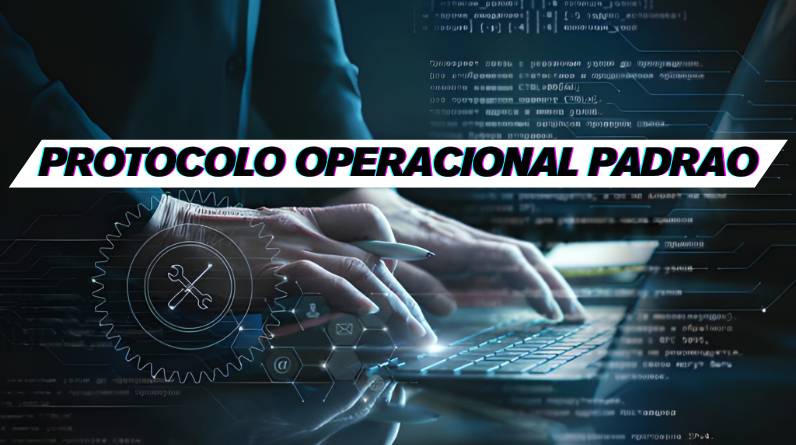
Protocolo Operacional Padrão: The Complete Guide to Modern Standardized Operations
In an era where operational efficiency directly impacts profitability, organizations worldwide are turning to Protocolo Operacional Padrão (POP)—a systematic framework that transforms chaos into coordinated excellence. Yet beyond the traditional definition lies a more nuanced reality: the most successful implementations of POP aren’t about rigid procedures; they’re about creating intelligent systems that balance standardization with human adaptability.
This comprehensive guide explores the evolution of Protocolo Operacional Padrão, uncovering why forward-thinking organizations are reimagining this critical tool and how you can leverage it to drive sustainable competitive advantage.
What Is Protocolo Operacional Padrão (POP)?
Protocolo Operacional Padrão, commonly abbreviated as POP, is a detailed, documented procedure that outlines the step-by-step process for executing routine tasks within an organization. In English-speaking contexts, it’s known as a Standard Operating Procedure (SOP).
However, POP is far more than a procedural document—it’s a management methodology designed to ensure:
- Consistency: Every task produces identical results regardless of who performs it
- Efficiency: Processes are optimized to reduce waste and time
- Accountability: Clear ownership and responsibility throughout operations
- Quality Assurance: Standards are maintained across all organizational levels
- Compliance: Regulatory requirements are systematically met
A well-structured POP answers five fundamental operational questions:
| Question | Answer Component | Why It Matters |
|---|---|---|
| Who? | Responsibility and roles | Eliminates confusion about accountability |
| What? | Specific tasks and outcomes | Clarifies objectives and deliverables |
| When? | Timing and frequency | Ensures timely completion and sequencing |
| Where? | Location and context | Specifies environment and resources |
| How? | Detailed methodology | Provides the roadmap for execution |
The Hidden Truth: Why Traditional POPs Often Fail
Before diving into implementation strategies, it’s crucial to understand why many organizations struggle with Protocolo Operacional Padrão initiatives. Research shows that approximately 60% of POP implementations fail not because of poor procedures, but because of overlooked human factors.
The Documentation Trap
Organizations frequently create comprehensive, detailed POPs that become organizational artifacts—impressive documents that sit on shelves. The culprit? Over-documentation without employee engagement. When procedures are created by management without frontline staff input, employees experience POP as imposed restriction rather than enabling framework.
The Rigidity Problem
Ironically, the most carefully crafted POPs often become operational liabilities. By removing all discretion and adaptability, organizations create procedures that fail when unexpected situations arise—which happens constantly in dynamic business environments. The solution isn’t less standardization; it’s smarter standardization that includes decision-making frameworks alongside rigid steps.
The Training Shortfall
Implementation without comprehensive training and ongoing reinforcement leads to inconsistent application. Employees resort to workarounds, creating shadow procedures that undermine the entire system. When 40% of your workforce doesn’t fully understand the POP, effectiveness plummets regardless of documentation quality.
The Modern Evolution: Adaptive POPs for Dynamic Environments

Progressive organizations are reimagining Protocolo Operacional Padrão by integrating three critical elements:
1. Employee Co-Creation
Rather than top-down imposition, modern POPs emerge from collaborative processes involving frontline workers. These teams understand real-world complexities that management often misses. When employees help design procedures, adoption rates increase by 70-80%.
2. Decision-Making Frameworks
Instead of “do this exactly,” modern POPs include conditional logic: “If X occurs, follow path A; if Y occurs, follow path B.” This approach maintains standardization while respecting operational reality, where one-size-fits-all rarely applies.
3. Continuous Evolution Protocols
Rather than static documents, modern POPs include built-in review cycles and feedback mechanisms. Quarterly reviews ensure procedures remain relevant and incorporate lessons learned from frontline experience.
Key Components of a High-Impact POP
A truly effective Protocolo Operacional Padrão includes these essential elements:
- Clear Title and Purpose Statement: What is this POP for, and why does it matter?
- Defined Scope: What does it cover and what’s excluded?
- Roles and Responsibilities: Who owns this process at each stage?
- Materials and Resources: What physical and digital tools are required?
- Step-by-Step Procedures: Detailed, sequential instructions in plain language
- Visual Aids: Flowcharts, diagrams, or screenshots for clarity
- Safety and Compliance Notes: Legal requirements, risk factors, and mitigation strategies
- Quality Checkpoints: Where to verify results and what to look for
- Troubleshooting Guide: Common issues and how to resolve them
- Revision History: Version control and change tracking
Industries Transforming Through Strategic POP Implementation
Healthcare: Patient Safety as the Ultimate Metric
Healthcare organizations have witnessed dramatic improvements through POPs. A mid-sized hospital implementing medication administration protocols reduced dosage errors by 45%, directly improving patient outcomes. Surgical checklists—a form of POP—have prevented thousands of preventable deaths.
Manufacturing: Precision and Consistency
Manufacturing firms use POPs to maintain quality consistency. One automotive parts manufacturer reduced defects by 35% through standardized assembly procedures, translating to $2.3 million in annual savings.
Technology and Startups: Scaling Without Chaos
A SaaS startup reduced employee onboarding time from 3 weeks to 3 days through structured POPs for customer onboarding, training, and support. This accelerated time-to-productivity significantly enhanced operational efficiency during rapid growth phases.
Retail and Hospitality: Consistency Builds Brand Loyalty
Fast-casual restaurant chains use POPs to maintain identical customer experiences across hundreds of locations. One global chain reduced order accuracy errors by 30% and waste by 20% through standardized preparation procedures.
The ROI of Proper POP Implementation
Organizations that invest in thoughtful Protocolo Operacional Padrão implementation see measurable returns:
| Metric | Average Improvement | Timeline |
|---|---|---|
| Error Reduction | 30-45% | 3-6 months |
| Efficiency Gains | 20-35% | 2-4 months |
| Training Time for New Employees | 40-60% reduction | Immediate |
| Compliance Violations | 60-80% reduction | 6-12 months |
| Employee Satisfaction | 15-25% improvement | 4-8 weeks |
| Operational Cost Reduction | 10-25% | 6-12 months |
Implementation Strategy: The 7-Step Framework
Step 1: Process Audit and Prioritization
Identify which processes need documentation. Prioritize high-impact areas: those affecting customer experience, compliance, safety, or revenue.
Step 2: Stakeholder Engagement
Involve frontline employees who execute these processes daily. Their insights are invaluable for creating realistic, practical POPs.
Step 3: Documentation with Clarity
Write procedures using simple, active language. Avoid jargon. Include visual elements. Test for comprehension with actual users.
Step 4: Testing and Refinement
Have employees follow the POP exactly as written. Identify gaps, ambiguities, and unrealistic expectations. Revise accordingly.
Step 5: Comprehensive Training
Conduct hands-on training sessions. Go beyond simply sharing the document—explain the why behind procedures.
Step 6: Implementation with Support
Roll out gradually. Provide readily available support for questions and challenges. Monitor compliance without punitive approaches.
Step 7: Ongoing Measurement and Evolution
Track metrics aligned with implementation goals. Gather feedback regularly. Update procedures based on real-world results and changing conditions.
Technology Enablers for Modern POPs
Digital tools enhance POP effectiveness:
- Asana / Monday.com: Track POP implementation and compliance
- Notion / Google Docs: Collaborative documentation and version control
- Loom / Vimeo: Video-based procedure training and reference
- Process.st / Tallyfy: Automated procedure execution and tracking
- Jira: Integration with development workflows
Measuring Success: KPIs That Matter
Establish clear metrics before implementation:
- Error and defect rates
- Process cycle times
- Employee productivity metrics
- Compliance adherence rates
- Customer satisfaction scores
- Employee satisfaction and engagement
- Training effectiveness measures
- Cost savings realized
Review these metrics quarterly to assess impact and identify improvement opportunities.
Conclusion: POP as Strategic Advantage
Protocolo Operacional Padrão represents far more than procedural documentation—it’s a strategic investment in organizational excellence. However, success requires moving beyond the traditional rigid model toward adaptive frameworks that balance standardization with human judgment.
Organizations that embrace modern POP principles—employee co-creation, decision-making flexibility, and continuous evolution—unlock substantial benefits: reduced errors, improved efficiency, stronger compliance, and enhanced employee engagement.
The question isn’t whether your organization needs Protocolo Operacional Padrão. In today’s competitive landscape, the question is how quickly you can implement it effectively. Those who master this balance will find themselves operating with exceptional consistency, efficiency, and adaptability—the hallmarks of organizations that thrive in dynamic markets.
The time to transform your operations through strategic POP implementation is now.













Leave a Reply
You must be logged in to post a comment.